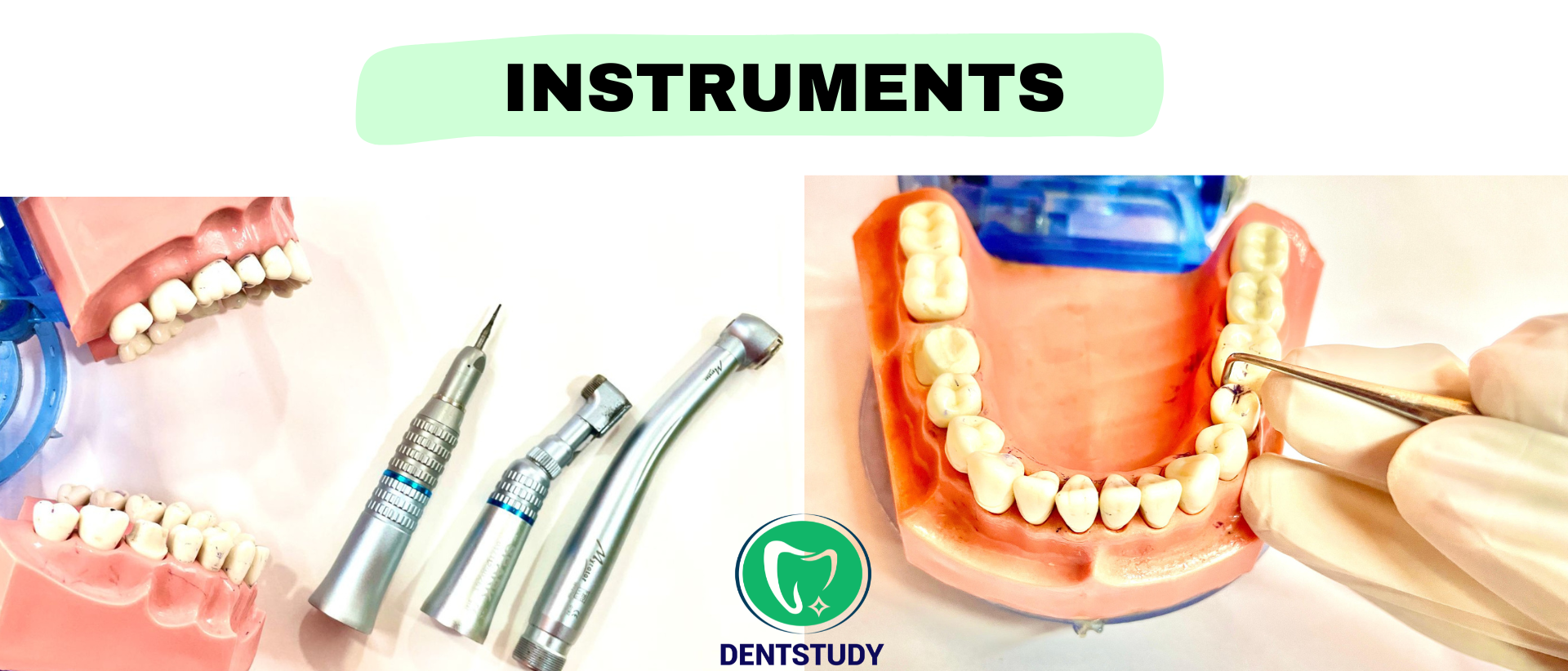
IMPORTANT VIVA QUESTIONS
📌 INSTRUMENTS
Q1. What is a plastic instrument?
Ans. Plastic Instruments is an instrument used for carrying the cement in a plastic stage application into the cavity. It has two ends, a flat end to carry the cement and a round end for condensing the cement onto the cavity.
Q2. What are condensers?
Ans. Condensers are instruments used for condensing the restorative material in the cavity in increments. Amalgam condensers are available in different shapes like round, cylindrical and parallelogram. They are serrated. Parallelogram condensers are used to condense amalgam in a narrow cavity.
Q3. What are finger rests?
Ans. It is an auxiliary position of one of the fingers of working hand over an adjacent tooth, gingival or extraoral area. Finger rest prevents injury to the tisssues by stabilizing the hand and the instrument during operative procedures.
Q4. What are the types of finger rests?
Ans.
👉 Intraoral finger rests:
1) Adjacent tooth: from tooth next to the working tooth.
2) Cross arch rests: from tooth of the opposite side of the same arch.
3) Opposite arch: from tooth of the opposite arch.
4) Finger on finger: rest from finger of the nonoperating hand.
👉 Extraoral finger rests:
1) Palm up: Extraoral rest from the chin with the palm facing upwards.
2) Palm down: Extraoral rest from the chin with the palm facing downwards.(Generally used for maxillary posterior teeth)
Q5. What is a grasp?
Ans. Grasp is the technique of holding pen grasp, palm, and thumb grasp, modified palm and thumb grasp.
Q6. What are the various grasps of instruments?
Ans. Modified pen grasp, inverted pen grasp, palm and thumb grasp, modified palm and thumb grasp.
Q7. What is the handpiece?
Ans. A handpiece is a device for holding rotating instruments, transmitting power to them and for positioning them intraorally.
Q8. What are the rotary speed ranges?
Ans.
1. According to Studervant:
a) Low or slow speed (<12,000 rpm)
b) Medium or intermediate speed (12,000-200,000 rpm)
c) High or ultra-high speed (>200,000 rpm)
2. According to Marzouk:
a) Ultra-low speed (300-3000 rpm)
b) Low speed (3000-6000 rpm)
c) Medium high speed (20,000-45,000 rpm)
d) High speed (45,000-1,00,000 rpm)
e) Ultra high speed (>1,00,000 rpm)
Q9. What are the different types of handpiece?
Ans.
i) Straight handpiece: For finishing extraorally fabricated restorations.
ii) Right angle handpiece: Not used in operative dentistry anymore.
iii) Contra-angle slow speed handpiece: For finishing the cavity and polishing.
iv) Contra-angle high speed handpiece: For preparing the tooth for restoration.
Q10. What are the finishing and polishing instruments?
Ans.
🔹Finishing burs: these are burs having more than 12 flutes and are available in different shapes.
🔹Paper-carried abrasives: sand, cuttle, garnet to paper discs or strips.
🔹Brushes: available in different forms like wheels, cylinders, cones.
🔹Rubber: rubber ended rotary tools attached to handpiece.
🔹Cloth: cloth carried on a metal wheel used for polishing.
🔹Felt: available in different shapes, attached to hand piece and used for polishing metallic restorations.
Q11. What are separators?
Ans. Separators are device or instruments used to displace two adjacent teeth slightly away from each other to create space in between.
Q12. What are the methods of separation?
Ans. i) Slow separation ii) Rapid separation
Q13. What are the slow separation methods or materials?
Ans. Oversize temporaries using gutta percha, base plate, copper wires or separating orthodontic wires and rubber are slow separation methods.They take longer time and are used for orthodontic purposes.
Q14. What are rapid separation methods and devices?
Ans. Rapid separation works by wedge principle and traction principle.
🔹 In rapid separation, wedges made of metal, plastic or wood can be used.
🔹Devices like Elliot separator employ the wedge principle.
🔹True separator (traction principle) or Ferrier separator are the mechanical separators used.
Q15. What is rake angle?
Ans. Rake angle: rake angle refers to the angle that the face of the bur tooth makes with the radial line (refers to direction of rotation) from the center of the bur to the blade.
